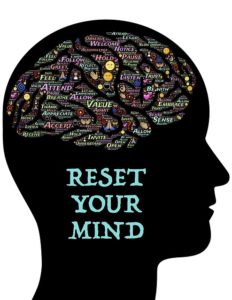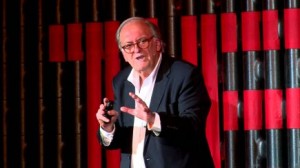|
|
|
|
|
|
|
|
|
|
|
|
|
|
|
|
|
|
|
|
|
|
|
|
|
|
|
|
|
|
|
|
|
|
|
|
|
|
|
|
|
|
|
|
 The traditional model of change is the one I call ‘destination’ type, that is, how to go from A to Z, fixing something, achieving something, installing something.
The traditional model of change is the one I call ‘destination’ type, that is, how to go from A to Z, fixing something, achieving something, installing something.
An entire lucrative industry of ‘Steps’ has been created around it. Successful or not (and most people agree to an average of 30% success), that was it. Done. Here is the bill. Learning? What do you mean? Yes, learning, I mean. Well, we have just finished and done, arrived at Z.
Another problem, another challenge, M&A, cultural transformation, customer-centrism, safety culture, digitalization, agility? Well, we’ll start again.
There is slow learning in one-off (‘steps’) change management methods, so they carry a fair amount of opportunity lost, and, dare I say, waste.
It’s 2022! We can’t afford this! We need an approach in which we arrive at Z with enough ‘capability built in’ to tackle the next one, and the next one, and the next one. It’s Z today, N tomorrow, X next month. So be it. The system is here ready to tackle it. A change management method that does not build change-ability/change-capability, is a waste. Of course many of those approaches would claim that they do but look carefully and see what you find beyond the expensive slide pack. You may be surprised how much empty space there is. I suppose, you can call the same consultants again?
So, is there something that builds that long term
capability, whilst, at the same time, reaching
that destination or destinations?
Yes. It’s called a Mobilizing Platform, which for us is Viral Change™. What matters in Viral Change™ [1]is to create the behavioural DNA conditions , the ‘structures’, the ‘governance’, the rules of the game in which the company does not need another ‘method’ any more. The way of dealing with any of these examples of challenges or transformation as above, is now embedded. Change-ability is inside. It’s a way of life.
The change method is dead. The ‘implanted’ Mobilizing Platform takes care of any method, so much that the word method disappears from the vocabulary.
Although everything could be considered ‘a method’ (a method is a trick that you have used twice before), not many people would talk about ‘your leadership method’ or ‘your management method’ or ‘your cultural method’.
Change should get exactly the same treatment.
________________________________
If you want to learn more – join me for a LinkedIn Live session later today hosted by Sinan Si Alhir [9] called: De-X-Constructed: Remarkable Organisations & Social Movements Powered by Viral Change™. [10]
________________________________

For a deep dive into the 5 Principles of Viral Change™ listen to this podcast [11]from The Culture Lab, where I’m interviewed by Aga Bajer.
_________________________________
If you want to discuss your behavioural and cultural change needs – let’s talk. Contact me at: [email protected] and my team will arrange a suitable time for us.
 Somewhere in the post-Covid peak, I promised myself that I wasn’t going to pay attention anymore to anything that starts with ‘in these unprecedented times’ (or that the current rate of change is ‘unprecedented’, and variations). Besides being slightly insulting to Mother History, the assertion never leads anywhere, other than perhaps to tranquilizer territory: because it’s so unprecedented, don’t worry, it’s not your fault that you were not prepared. Relax.
Somewhere in the post-Covid peak, I promised myself that I wasn’t going to pay attention anymore to anything that starts with ‘in these unprecedented times’ (or that the current rate of change is ‘unprecedented’, and variations). Besides being slightly insulting to Mother History, the assertion never leads anywhere, other than perhaps to tranquilizer territory: because it’s so unprecedented, don’t worry, it’s not your fault that you were not prepared. Relax.
The Covid pandemic turned our world upside down, yet it is remarkable how fast we have been back to old habits and old platitudes (have a vision, involve stakeholders, be authentic, be yourself) which seem to have been Covid-free.
When you see that the climax of current debate and strategic thinking in organizational terms is the ‘hybrid vs non hybrid’ work issue, happily embraced by academics and gurus who always have an unsolicited view of anything, then we may have to accept that perhaps we have a sad state of affairs in terms of innovation in organizations. The ‘new ways of working’, so much trumpeted by self-declared experts, people who know, seems to come down to office or no office, working from home or not, flexible or not, and a Great Resignation which is permanently announced.
Incidentally, the views of all those organizational gurus are no different from any other mortal, with the difference that they are always preceded by ‘research shows’, even if it would be hard to find any real ‘research’ done by any of them. Other than a SurveyMonkey to a bunch of CEOs, that is.
But, hey, these are unprecedented times, so that may be why we don’t know what to do other than saying that these are unprecedented times.
The old change templates are tired
The traditional organizational change management template (of which the ‘have a vision, involve stakeholders, be authentic, be yourself’ is a representation) is exhausted. It had nothing new to say pre Covid and continues to have nothing new to say now, in these, of course, unprecedented times. It’s still hooked into a mechanistic view of the world that suits ‘project management’ well, but it’s ill-conceived to deal with ‘change management’, particularly cultural change. Conveniently it mixes up both to solve the problem creating an illusion of control that can then be packaged into a book, or two.
For many years I have been struggling with the colossal disconnect between what we, from inside organizations, see as the mechanisms of change and what real change ‘outside the walls’ looks like. That is, in the (macro) socio-political world where our pristine laws of managerial change (7 steps, 5 steps, any steps) survive with the resilience of an ice-cream at the school gates. For example, we are told by some famous ‘change experts’ that we have to create ‘coalitions’ but the managerial world is happy to acquire the language and then… create lots of teams. Because we have no clue what a coalition looks like, but are very good at building teamocracies. Being provocative, I would question the worship of collaboration, a never questioned goal, no matter what. Could you imagine anybody saying ‘we don’t want collaboration?’ Yet, do you really want collaboration between negative and toxic people? Do you think collaboration and excellent team work between terrorists is good?
My professional world is the organizational world. Our clients are corporations, big or small, private or public. However, I now spend 80% of my ‘continuous education time’ on learning and stealing from the macro social change world (e.g social mobilization, political campaigning, social movements) and 20% on tracking Business School like stuff. I stopped my subscription to Harvard Business Review a long time ago with the same mixture of epiphanic revelation as the child that suddenly realises that Santa Claus is not real anymore.
In Shakespeare’s Coriolanus, scene 1, he says that ‘when the sea was calm all boats alike, showed mastership in floating’. It feels like an appropriate description for many ‘change management goals’. Maybe, in these unprecedented times we need to learn how to float again? Just kidding.
White Water Change
What I call White Water Change (when it comes to describing daily life, the rapids of the wild river seem more appropriate than Coriolanus’ calm sea) is an envelope that contains a series of principles that seem to resist being ascribed to either (external) macro social change or (internal) organizational change. To call them universal laws of any-change would be highly pedantic. However, this collection of 40 ‘laws’ seem to be robust enough to be found underneath most situations in which ‘change really works’. They do not belong to a particular Theory of Change but you’d better use them if you want to see that change. Let me share a few examples, just the simple highlights here.
Segmentation. Segmentation means that the world in front is not monolithic and one has to make the effort to tailor your communication. In the socio-political arena you would not survive five minutes if you had one single message for everybody. You don’t talk to a 25 year old worried about employment in the same way or using the same content as you would do when addressing a 60 year old worried about pensions. What is the big deal here? That in corporations we don’t distinguish, and we push down the same ‘communication’ top down to reach all corners, blue collar, white collar, young, old, newcomer, veteran, men, women, part timers, full timers. Regardless. Usually in the same company where the marketing department spends a fortune on (external) market research.
Localization. Localization is another of the 40 principles. ‘Local is not the delivery place’, is the phrase a great client, then friend, used to explain that ‘local’ was actually the place where all stuff happens, as opposed to a place where stuff is delivered into. It took me a little bit to appreciate the wisdom of this apparent triviality. But it was a big aha moment. As in many other projects, we were ‘cooking it’ all centrally to then be ‘delivered’ locally. But what if we got ‘the centre’ wrong? This little disruption of conventional geography (‘de-centring’ is the term used in some social, community development models in the ‘outside the tent’ world) is not trivial. In our business organizations we have adopted some language, for example ‘bottom up’. Wow, that took a while. But language may be deceiving. In some cases its not more than the same top down just migrated a bit downhill. With many corporate ‘bottom up’ you now get the same stuff but at the bottom.
Strength base. A final example has to do with the inevitable question of ‘where to start’. The business organization seems to be obsessed with deficit: what we don’t have, does not work, we are low in. Tons of energy is used in fixing, less in building. Employee engagement surveys tell you what you are lacking, where your scorers are low. OK, also the high ones, but management attention is insignificant compared to the call to arms to investigate the lower-than-benchmark scores. Quite a lot of (macro social) community development in society, starts at the opposite end: banking on strengths, focusing on what we have and how we use it, what we are good at, where the energy is.
I realise that there are 37 more to go! But wanted to share the spirit of these White Water Change principles and highlight once more the underlying belief: there is more to learn from outside the corporate tent than from inside the tent.
We may be in unprecedented times (sorry!) but the issue is that our thinking is highly precedent, almost sea calm like. We’ve got the wrong boats.
____________________________________________________
Learn more about my view on sustainable organizational and behavioural change here [1] and get in contact [12] with my team if you want to learn more.
____________________________________________________

The Myths of Change Webinar with Leandro Herrero and Carlos Escario
Watch on demand [13]: To change to the ‘new normal’ we must think and act differently in the management of our organizations, particularly in the areas of change and transformation.
For a deeper dive into the world of behavioural and cultural change I have written several books – I recommend the following – available on Amazon:

HOMO IMITANS [15] – THE ART OF SOCIAL INFECTION; VIRAL CHANGE™ IN ACTION
 Corporate grade, reporting lines and membership of leadership teams in organizations often go together. But unbundling these components is a healthy exercise and a powerful rule in the maths of change.
Corporate grade, reporting lines and membership of leadership teams in organizations often go together. But unbundling these components is a healthy exercise and a powerful rule in the maths of change.
If you report to Joe – CEO, Divisional Director or Country Manager – chances are you share this with another eight or ten people who constitute Joe’s management team, executive committee or leadership team. This is what the organization chart says. Most management teams are formed by what the organization chart dictates; by an ‘accidental’ reporting line. Everybody reporting to Joe is de facto a member of his management team.
In medium-sized or large corporations, structures are very often cross- or multi-functional. Imagine a Business Unit composed of a large Sales function, a smaller Marketing function and then a series of support functions such as HR, Finance, Legal, IT and perhaps a very small Strategy Team. The leadership team of that Unit is bound to be composed of the Director of Sales, the Director of Marketing, the Finance Controller, Legal counsel, the Head of IT and the Head of the Strategy Team. I suggest that this happened by default, by the dictation of the organization chart and that nobody ever questioned it.
But a legitimate question may be, “does everybody need to be part of that leadership team?” Many people in business organizations would of course say ‘no’. But the way we sometimes solve the issue is by promotion/demotion. For example, we may say only directors are really part of the management team. This is managing by grade, not by brain and it’s not what I am suggesting.
Grade in the corporate structure (VP, Director, Manager, Head of) should not be a criterion of membership of a particular leadership team. Membership should be by invitation only. And only those who are in a position to add value to the role – whether they are in charge of a large part of the cake or not – should be invited.
It may be that, on reflection, the leadership team of the above Business Unit example should be composed of the Director of Marketing, the Director of Sales, the Head of HR and two Country Managers who do not report directly to the top leader of the Business Unit, but who are called upon to serve on that leadership team.
There may be alternative arrangements, but the principle is one of ‘by invitation only’. A principle that forces you to stop taking for granted the fact that membership will happen automatically or that grade or rank are a form of entitlement. It may be counterintuitive at first, but it is very effective. Much of the counterintuitive aspect comes from the fact that we tend to have pre-conceived ideas about how the organization should work. Sometimes these ideas carry flawed assumptions:
When you question management team compositions for the first time and, de facto, try to unbundle corporate grades, leadership and reporting lines, you will encounter some negative reactions and a few puzzled faces. But once this has been accepted as a legitimate questioning of the status quo, a breeze of healthy fresh air will start to flow through your organization!
Something that you may want to try as a model to follow is the Board of Directors. Though there are some differences between countries, a Board of Directors in public companies is usually composed of a few executives and some non-executive directors, who are either representing some shareholder sector or participating as members in their own capacity, background, experience or particular expertise. We have accepted this kind of designed composition as normal when it comes to the Board, but this is far from common for executive and leadership committees. But there is no reason why you could not mirror this, unless you want to stick to the default position because, “we have never done it like that.”
_________________________________________________
 This article is also featured in my latest book: Camino – Leadership Notes on the Road. [16]
This article is also featured in my latest book: Camino – Leadership Notes on the Road. [16]
Welcome to my weekly focus on culture change, leadership and organizational design. This week, I focus on what culture is, how behaviours create culture and the importance of peer-to-peer networks in achieving large scale, sustainable cultural change.
________________________________________________________________________________________________

Culture is the difference between 30 people making a decision in 30 days, or 3 people making the same decision in 3 days. Culture is the difference between hiring costly employees and retaining them, or hiring costly employees and losing them after 6 months. Culture is the difference between making a decision and implementing it, or making the same decision and waiting to see if it sticks or people take it seriously. Culture is the difference between agreeing the plan in the meeting room, or trashing it at the break in the toilets. Culture is hard stuff. Do you need me to give you an ROI on these differences?
I use lots of these examples to show that culture is ‘hard’, not ‘soft’. Anybody with a calculator can see it.
Behaviours create culture, not the other way around. Change behaviours get culture.
Behaviours are copied and scaled up peer-to-peer. Everybody copies everybody but some people are more copy-able than others. It turns out that 5 – 10% have very high (non-hierarchical) influence. Find them, ask for help and give them support. Tell stories of success all the time. Make sure leaders do support the peer-to-peer work, but don’t interfere. This is the ‘what’ of Viral Change™ [1]in a box. The ‘how’ is what I do for a living.
Peer-to-peer is stronger than managerial top down
Peer power: if managers say, ‘safety is first’, the impact may be relative. The dictation is totally expected. This is what they are supposed to say. If my peer says, ‘safety is first’, I’m beginning to pay attention. It’s not expected, we were talking football and holidays. (what is the matter with him?) But I hear it. Tell me more. Peer-to-peer is stronger than managerial top down.
Peer power: Peer-to-peer is the strongest source or engine of change and mobilization inside any organization.
________________________________________________________________________________________________

More and more, the neat and innovative work is taking place outside the formal, hierarchical structures, in the informal networks of the organization. Extend your reading on this topic – with free material available on our Academy [19] site, material includes:
________________________________________________________________________________________________
 Behavioural Based Change Resources
Behavioural Based Change ResourcesBehaviours are at the heart of Viral Change™ [1] because only behavioural change is real change. Behavioural change is sustainable and scaleable as behaviours creates cultures – not the other way around. For a deeper dive into this area, download our Behaviours Part 1 [20]. This material includes:
________________________________________________________________________________________________
Previous issues on behaviours:
Habits have no meaning, they create it. Start with behaviours,
get meaning
Whether you are sitting in HR, Organizational Development or any other corporate function, or simply in a position of management and leadership, there is no way, today, that a single discipline will provide you with the theoretical and practical background that was once assumed as the solid ground behind your praxis.
Traditional Psychology has a hard time explaining and Behavioural Economics has set things upside down. Must read, must learn.
Risk management stops being standard and ‘rational’ and needs to cater for Black Swans, if that is possible at all.
Employee Engagement as understood today is a weak approach unless it embraces the logic behind social movements, something that many organizations still see as esoteric.
The richness of the day to day ‘informal organization’ and peer to peer work (and influence) can only be understood with a high dose of Network Theory. What do you mean you don’t do maths?
The traditional disciplines took a view, a while ago, that reality was ‘interdisciplinary’. That was the buzzword. This is not enough today. The answers today come from meta-disciplines, not just a semantic trick. Meta-disciplines are not simply the old inter-disciplinary pick and mix, but frameworks to understand things elevating the approach to a completely new territory, theory and practice. Example: digital activism. I know, not something too close to day to day management (really?). Digital activism meets network theory, meets social anthropology, meets political marketing, meets social movements, meets Big Data, etc. It’s not the sum, it is beyond the sum.
I have pointed out to the new disciplines of management, ‘The New Classics [22]’, as a way to tap into territories that, although not new, have not been the traditional source of management and leadership.
Of course, one can ignore all this and the sky may not fall, but, if you are serious, your reading list should be scarily long by now.
________________________________________________________________________________________________
Following on from Wednesday’s [22] proposition, the new disciplines of management, ‘The New Classics’ are these 10:
1. Behavioural Economics
2. Political Marketing
3. Network Theory
4. Viral Change
5. Social Movements
6. Social/Corporate Anthropology
7. Digital Activism
8. Generation (and urban) anthropology
9. Social Media technologies
10. Critical Thinking
I introduced on Wednesday [22], very briefly, 1 and 2
As before, I will mention one single area in each, as an example, from where we can draw immediate learning and applications. It’s just one example of a rich learning from all of them, and by focusing on one aspect, I am conscious of trivialising too much. I am pointing to tips of icebergs.
3. Network Theory. Amongst other things it tells us that a Bell curve, normal distribution in the organization does not exist other than in an HR mind. Everything inside the organization (a network) follows a Power Law distribution. For example, there is a relatively small number of people with high influence and connectivity, and a large number of people with very little influence and connectivity. This can no longer be ignored. Don’t try to find a Bell curve of influence. It does not exist.
4. Viral Change. [1] This is a trans-discipline that explains how to mobilize people: bottom up (not top down), behaviours-based (not information based), peer-to-peer (not hierarchical channels), bottom up storytelling (not top down ‘stories from above’) and Backstage Leadership, the art of supporting from the back, not upfront with PowerPoints. Plenty of this here.
5. Social Movements. Organizational culture is an ‘internal social movement’, or isn’t. So we’d better learn from people who have run these. Key learning: you have to cater for a multitude of motivations, but be very clear about the non-negotiable (behaviours). In traditional management, our obsessive ‘alignment’ needs to be redefined. Also, ‘Rebels’ need a cause and a direction, as opposed to the fashionable thinking that having passionate people, rebels and mavericks in a room, will change the company. Yes, but you may not be able to recognise it.
6. Social/Corporate Anthropology. Hardly new. However, life in the organization can be understood in terms of rituals, tribes, identities, kinship and other anthropological concepts. And, suddenly, it all makes sense! Anthropology is the forgotten discipline in management. A beautiful discipline if it were not for the anthropologists who often speak an incomprehensible language. Corporate Anthropology is also a forgotten discipline, more complex than doing a PhD on South Seas tribes to be followed by a post in consumer behaviour for Unilever.
7. Digital Activism. This teaches us about rapid mobilization and large scale effects. Also about the differences between champions, ambassadors, advocates (and click-tivists), and activists. These are differences that we don’t understand or use well in the traditional view of corporate life, where these concepts have been commoditised. I don’t want more ambassadors. The company is not an Internal Diplomatic Service. Personally, give me activists, who actually act. But the only time we use the term (other than in Viral Change [1]) is to refer to employees engaging externally on behalf of the employer. Activists are not ambassadors who click and ‘like’ and say how good my company is.
8. Generation (and urban) anthropology. There is less difference between a Chinese teenager and a French teenager, than a Chinese company and a French company. In organizations we are still stuck in rather old ‘cultural (national) distinctions’ and frames which don’t predict much anymore. How you handle Millennials, for example, is today more important than understanding ‘German’s power distance’.
9. Social Media technologies. Digital is not a suit of toys. We need to distinguish between building an audience and building a community, between push and pull mechanisms, and the differences between connectivity and collaboration.
10. Critical Thinking. [24] Two things here: (1) It can be taught, and (2) in the traditional management of organizations we are in very short supply. At the very least it is about (a) learning the art of questioning, how to be disciplined in inquiring and (b) avoiding/managing fallacies and biases. It’s a praxis. It gets better and better when practising and when establishing some of these practices across the organization, at a scale.
________________________________________________________________________________________________
Renew, transform, re-invent the way you do things. Organizations today need to look at better ways, alternative and innovative ways to change the status quo. It’s not about being radical for the sake of it. Only if you try radical ways will you be in a better position to find your ‘fit for purpose’ goals.
As Michelangelo said: ‘The greater danger for most of us lies not in setting our aim too high and falling short, but in setting our aim too low, and achieving our mark’. He was a radical in the way we talk about it.

_____________________
At The Chalfont Project, we have crafted a short intervention on Critical Thinking [24]:
In this short intervention we teach you and your team Critical Thinking methods and questions that will help you focus your time on the things that matter, make good and fair decisions and escape the dangers of human biases. We will also help you apply these methods to your everyday challenges in your organization.
You will learn about strategy acid tests and many mind fallacies, including various biases, and the practical Critical Thinking methods that you can use to address these.
This high impact, short intervention will:
Amongst the challenges that management has in the 21st Century, which are shared, of course, by specific functions such as Communications and HR, this one represents perhaps the best summary I can think of. How can we master each of these four areas and the connection between them? (1) Messaging, Communicating (2) Triggering behaviours (3) Sustaining actions, and (4) Shaping cultures. We have been stuck for a long time on the first, and people are reasonably good at it. Indeed, this (1), Messaging, would be the core of Communications for many people. Also, triggering behaviours via our communications is not bad. But we are not sure when and how it happens, Sustaining anything, however, is far from mastered. What we have become Masters of are the One Offs (communication, event, Town Hall, offsite, powerpoint stack). Beyond sustaining, shaping/creating new cultures, is even more of a question mark. Be careful you know ‘which box you are in’; you can’t shape cultures (4) remaining in the Messaging (1) area.
The problem is that the answers to all these, in isolation or combination, are hardly to be found in the traditional management disciplines. These, and their toolkits, were crafted in a time when business life was predictable and relatively stable. In the new fast moving environment, we don’t have very good toolkits. So we are applying the old ones to the new problems, new pace and new scope of today’s business life.
Where to go for an upgrade? There are 10 disciplines that I call ‘The New Classics’. Some are, strictly speaking, far from ‘new’. But they are new for us in management and the communication /HR/other functions. They are not completely off the radar screen, we have not done much about them. In fact, many people would see them as alien to the kinds of things ‘we do’ inside organizations.
These are ‘The New Classics’. I will mention one single area in each, as an example, from where we can draw immediate learning and applications. It’s just one example of a rich learning from all of them.
I will mention 2 today, and the rest on Friday:
1. Behavioural Economics. Born from the failure of traditional economics to explain and deal with irrational behaviour, this new discipline is rich in content. Reframing messages is a big deal in Behavioural Economics. The classical example is the switch from ‘Don’t use towels that you don’t need’ (hotel rooms) to ‘The last people in this room used only one towel’. Caricature as it may sound, the second message triggers significant behavioural change whilst the former does not. Reframing and triggering behaviours, all in one. Some reframing works, some do not, and we know quite a lot about this, even if we don’t apply it. This is a bad caricature of the whole Behavioural Economics field but wanted to point towards the ‘irrational behaviour’ area (of insights and knowledge), which is now a New Classic. Many of our HR systems and processes are still the equivalent of Neoclassical Economics that assumes rationality and logic.
2. Political Marketing. Segmentation of people inside the organization, other than by performance, is almost zero. We have one single top down vision, mission and narrative that is ‘good for everybody’. Here we go. You would not survive one week in Political Marketing where all messages are segmented. In the US, for example, you don’t talk to a 25 year old about Medicare, and you don’t talk to a 65 year old about job creation. In our organizations, we talk about everything to everybody, for some peculiar views about ‘equity’ and ‘democracy’ which are completely misplaced. Most activity within the organization is tribal.
More next on:
3. Network Theory.
4. Viral Change
5. Social Movements.
6. Social Anthropology.
7. Digital Activism.
8. Generation (and urban) anthropology.
9. Social Media technologies
10. Critical Thinking
________________________________________________________________________________________________
How do you make values live? Install them in a culture?
Model 1: You preach them and preach them, and preach them again. Some people, hopefully lots of people, will hear you. But Model 1 has limited power. The batteries will run out soon. Your only hope is to start again, repeat. Results in increased battery replacement.
Model 2: Some people start behaving in a way consistent with those values. Other people copy them, imitate them, follow them. A critical mass of people appears. Which is copied by another critical mass. At some point, these behaviours became the norm. Model 2 is faster and more sustainable.
Model 3: as in Model 2, but those who start the trend are people highly connected in the system, whose imitators, followers, copiers, can be counted in double or triple digits. The spread is faster, the success is faster, the ‘social proof’ is faster.
Model 3 is the solution for the large scale spread of values and behaviours. But it needs a platform (for us, the Viral Change™ Mobilizing Platform [1]) to craft the desired behaviours, support all key players, promote peer-to-peer positive influence, track progress and make sure that all is visible via a well-constructed storytelling system.
Speaking about courage as a value, Susan Sontag [29] said “Courage inspires communities: the courage of an example — for courage is as contagious as fear.”
Yes, emotions and values are contagious. I did a lot of research on this and all captured in my book Homo Imitans [30]. The power of social copying and imitation is underestimated.
Large scale change, inside or outside the organization, is behavioural or it isn’t. It can be done. That is the good news.
______________________________________________________________________________________________
Free Webinar with Q&A:
 ‘A Better Way to…create sustainable large scale behavioural and cultural change across your organization.’
‘A Better Way to…create sustainable large scale behavioural and cultural change across your organization.’
The right Organization Operating System can host change, transformation, deployment of values and leadership, mobilization of people, reshaping of a culture, employee engagement and any other day to day need of the organizational architecture.
Viral Change™ provides that platform – creating the behavioural DNA for the organization. With that DNA and the appropriate mechanisms of scale up, change is possible. But change is not a project or a programme, it’s a way of life.
3rd June, 1730 BST/1830 CET
REGISTER NOW [25]
If I were the one in charge of deciding the ‘person of the year’ for the front cover of Time Magazine, or other front covers for that matter, I would pick ‘The Peer’. As in peer-to-peer.
Maybe this is more than ‘the year’. It’s the decade of the Peers. And I am not talking about the “British nobility’ in the House of Lords.
The Edelman Trust Barometer has been highlighting the importance of ‘people like me’ (my peers) for many years. I trust ‘people like me’ twice as much as I trust the CEO, the barometer says. Peer-to-peer is the strongest source of trust and collaboration within the organization. There is a whole ‘peer economy’ in which buyers and sellers interact directly. There is peer-to-peer lending. There is also peer-to-peer banking on direct transfers of funds between people. There is an equivalent term used in IT. There are ‘patients like me’ websites, and for mums, and for many other tribes. There is ‘peer-to-peer coaching’.
Peers! The transversal, horizontal connectivity between people. The tribes. The alternative to hierarchical models. The Facebookization of life.
Only a few years go, we would not be talking peers other than in the scientific arena (peer reviews of journals) or in the context of vaguely defined ’peer pressure’. The peers are not new, but they have only recently reached adulthood. And they have even been given business models.
Trust has gone horizontal, it’s people like me, not people like those at the top. And for better or worse, this ‘like me’ is also working in the mobilization of people in the political arena: one of us, versus one like them. In the US, this is pure polarity at the moment.
Peer-to-peer in organizations is today more and more at the core of ‘where real stuff happens’ . In Viral Change™ [1], we orchestrate peer-to-peer engagement and activism as the engine of change.
Yes, the world is flat. Well, not that flat, mainly horizontal.
It is the year of the peer, the year of the horizontal, and the year of HR/OD/L&D/tribes of human capital to once and for all pay attention to social, non-hierarchical influence inside the organization. Horizontal management and horizontal leadership.
The world looks sideways, not just up and down.
________________________________________________________________________________________________
I said previously [33] that large scale mobilization of people (AKA social movements, AKA company culture) needs a platform. They don’t need a ‘change management method’ . Viral Change™ [1] is our mobilizing platform.
So what is a platform? An ecosystem of rules of the game, social algorithms (logic, as in idea-logic or ideology) and communication mechanisms that together form an operating system. A mobilizing platform is an operating system.
It contains (or hosts) at least 10 components
Now you can test your ‘change management methods’ and your eight steps against this.
________________________________________________________________________________________________
Dr Leandro Herrero is the CEO and Chief Organization Architect of The Chalfont Project [31], an international firm of organizational architects, and the pioneer of Viral Change™ [1], a people Mobilizing Platform, a methodology that delivers sustainable, large scale behavioural and cultural change in organizations, which creates lasting capacity for changeability.
Dr Herrero is also an Executive Fellow at the Centre for the Future of Organization, Drucker School of Management.
An international speaker, Dr Herrero is regularly invited to speak at global conferences and corporate events. To invite Leandro to speak at your conference or business event contact: The Chalfont Project [7] or email: [email protected]. [32]
Today, we are in front of daily wars of narratives: political, social, models of the world, futures, concept of Man.
In The World As It Is [34], a memoir of Obama’s White House by Ben Rhodes, who held several roles including Speechwriter and Deputy National Security Advisor, there is an episode in which the President seems to place storytelling at the very top of his job description, extending it to those close to him. Literally he quotes: ‘Storytelling, that is our job’. And he was not referring to the function of speechwriting, as we know one that requires almost an alter-ego transformation to write what the leader wants to say, but not even himself knows it.
Over the years, I have become very curious and fascinated about the function of ‘speechwriter’ in USA presidencies, a function which has been held by incredibly smart people, on both sides of the USA American spectrum. Obama was a good storyteller himself, who very often would set aside the proposed speech and would hand rewrite it himself. The only thing that interfered with his storytelling abilities (did his anthropologist mother influence that?) was the strong ‘lawyer within’ which tended to put a premium in ‘explaining the logic’ and, in doing so, driving many people around him truly mad.
Storytelling wraps up intention, emotions and behavioural triggering in ways that no other leadership arsenal does. People remember stories, not bullet points.
Reflecting on storytelling as one of the five pillars of Viral ChangeTM, I can see that there are some characteristics of a story-leadership narrative that work brilliantly when used in combination. These are my experiential views, not a piece of ‘scientific research’.
Compelling: convincing, attention grabbing, impossible to dismiss, it wakes people up
Surprising: there is something unexpected, unusual, unpredictable, refreshing
Not neutral: people may like it or not, agree or disagree, but they can’t be neutral about it
Pulling: it seems to produce some traction, perhaps a sense of belonging (‘I want to be part of that’, ‘I wish I could be part of that’). People feel some attraction, the opposite of a push: I feel the weight on me, a bombardment
Aspirational: It has a future underneath, it points to the future perhaps anchoring in the past. That angle is not entirely clear in historical narratives that tend to ‘explain the past’ to perhaps justify a present but often fall short of making clear sense of a future. Entire nation narratives have been built upon stories of ancestors crossing rivers that never existed, descending from lands that were fictional and settling in territories where they never left behind any archaeological footprint
Unique: if you can take this in. I know it’s difficult but nevertheless an aspirational feature. The test is simple: does this sound like my next door neighbour? (read competitor)
Human: since humanity is not a given anymore, this feature is not to be taken for granted
BTW, as anything else in leadership, it gets better with practice.
________________________________________________________________________________________________

________________________________________________________________________________________________
In a large company, what do a leadership development, a culture change and a business integration programme typically have in common? That they don’t talk to each other.
Fragmentation of ‘corporate initiatives’ is a common disease in many companies. Like those original French cakes, they live in a mille-feuille world of parallel layers on top of each other with no connection other than nominal.
Leadership development workshops and activities are cascaded down via the organization’s pipes. Cultural change programmes are equally cascaded down in the same format, which is even worse since cultural change is not instructional top-down communication (not even instructional top-down communication, awareness, rational and emotional engagement; that is cultural broadcasting). Business integration programmes are structured as process integration (and, perhaps, simplification or consolidation), usually seen these processes as independent pieces of the machine that can be polished, oiled or upgraded.
The tragedy of it all, is that leadership development runs independently from culture change and neither of them seem to have any influence on business integration.
This mille-feuille, multi-layer approach is very common and, very often, attempts to explain that this is not the case, and all are part of a global HR strategy, or business strategy, is equivalent to saying that all trains to the south of England depart from Waterloo station. Yes, they do, then they don’t touch each other, ever.
In 2020, the answer to this poor state of affairs, which has remained unchallenged for decades, is to think and structure, in terms of a ‘platform’. A (mobilizing) platform is an ecosystem of behavioural rules, ways of collaboration, peer-to-peer networks and a single ‘engine room’ in which all human capital initiatives sit, be it leadership, culture, talent etc. Viral ChangeTM is for us, that mobilizing platform. It is inconceivable that ‘initiatives’ could have a life of their own. That does not mean that each of them don’t have their own sponsors, accountable people or partial goals. But they all sit and live together.
In my experience, once this is acknowledged and seriously tried, it is not as difficult as it seemed originally. Most sensible people would agree that it makes sense, despite not being the traditional way we have managed these ‘programmes’.
A platform is not a collection of methods. It is a host with rules and principles. For example, top-down communication has limited effectiveness, peer-to-peer is the stronger source of influence in the organization, behaviours are the only thing visible and scalable, the informal organization has richer innovation mechanisms than the formal one, etc. Once these principles and their social algorithms (‘if so, we would always do A instead of B’) are in place, the mobilizing platform is the universal host.
In 2020, there are ways to stop corporate mille-feuille management. A single platform of mobilization and engagement must be in place not multi-initiatives competing with each other for air time, players and money.
________________________________________________________________________________________________

With 3CXcan [37], a simple online survey, we can tell you. We have turned organizational network science into real practice: we uncover your networks with no pain, efficiently, fast and with absolute confidentiality. Find out more. [37]
Contact us now [7] for a free virtual consultation.

________________________________________________________________________________________________

In this mini series I have shared so far four inconvenient truths uncovered by the forensics of ‘change management’ failure:
The fifth inconvenient truth is that, in fact, instead of the usual suspect and inevitable culprit of ‘lack of communication’, we communicate too much.
Entire transformation programmes, culture change and reorganizations/redesigns are based upon ‘Communication Programmes’. The narrative is perhaps well crafted, the messaging ready and conveyed, and the succession of workshops and roadshows in place. All rolling. All cascading down. All for an indisputable purpose.
So why is it that it does not do the trick and, in fact, it contributes to that awful 75% ‘failures of change’?
Two reasons:
Too many people involved, too much vision, no continuity plan (no change platform), lots of one off fireworks/corporate (flash mob) activities, starting where there are more antibodies and, by the way, doing the whole thing via a top-down-mother-of-all-communication-programmes, will ensure you skilfully and healthily contribution to the maintenance and even growth of that 75% track record of ‘change programmes’ failing, which, in management, we are all so proud of.
We can do better.
______________________________________________________________________________________________________________________________________
We have been running enterprises with very tired concepts of empowerment, ownership, accountability and other little challenged pillars. The truth is that there is mythology embedded in all those concepts. Old traditional management thinking will be unsuitable to win in the post Covid19 scenario.


Fourth in the mini series: uncovering of truths of the failure of change and transformation programmes via a reverse engineering.
Lack of vision, one way or another, is often used to explain failure. In my experience this does not necessarily come at the top. OK, there may be sloppy visions, or half cooked visions, I accept. But nobody is completely blind.
In fact, strong tunnel vision is as big a problem. Something has been decided (a form of restructuring for example) and the red button is pushed with no flexibility to review or change gears. It’s a Brexit type of organizational transformation.
Of course, our wonderful mind mechanism, cognitive dissonance, kicks in and we have a million reasons why what we are doing is perfect, after all we have committed lots of resources and, PowerPoints, you know, have a life of their own. Cognitive dissonance then meets her sister Groupthink, and then it’s all sorted.
I wrote many moons ago that the Proverb’s line, ‘when there is no vision people perish’ needs to be translated in management as ‘when there is too much vision people perish faster’.
Fixed, rigid destinations expressed by fixed minded people, seen as fixed and strong leaders are simply dangerous. If top leaders have all the answers, they are not qualified for the job.
So, then, what? Am I advocating chaos? Never said that. We don’t’ live in a bipolar world. We live in one where navigation skills are needed and that included the ability to change gears faster.
________________________________________________________________________________________________
To change to ‘the new normal’ we must think and act differently in the management of our organizations, particularly in the areas of change and transformation. We must abandon change as something imposed in favour of people becoming true agents. Organizations that have mastered this have been in ‘the new normal’ for a while!

What attendees said:
‘Thank you for the opportunity to participate in this fantastic webinar. Both the depth of the discussion between Leandro and Carlos and the very intensive exchange in the chat inspired me.’
It was a great pleasure to participate in today’s webinar…. If you would have been sitting next to me, you would have seen a lot of ‘head nodding’ and heard a couple of loud ‘yes’es’ from the bottom of my heart.
WATCH NOW [26]
________________________________________________________________________________________________
